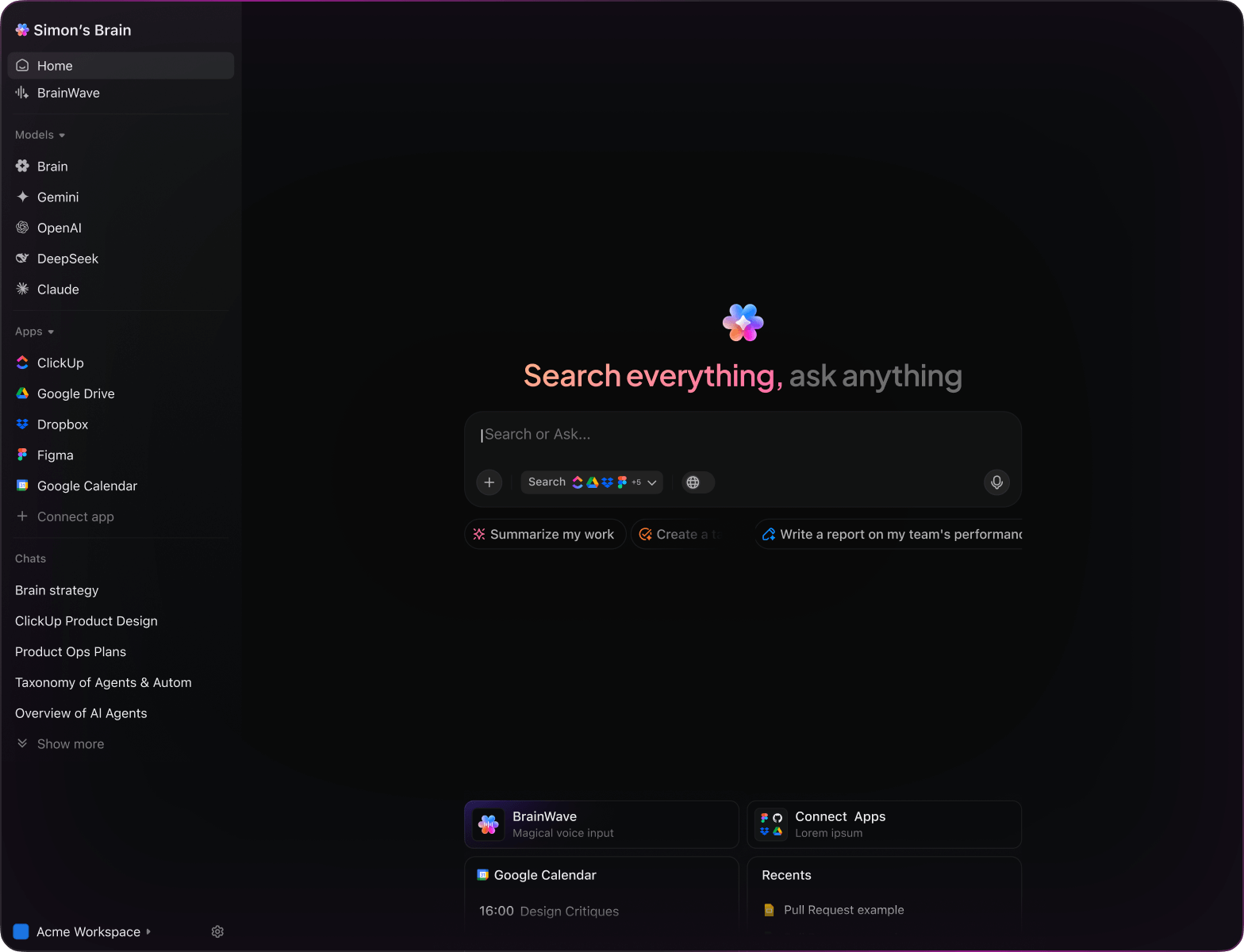AI Storytelling for Historical Fiction
Top AI Prompts for Crafting Historical Fiction
Bring past eras to life, organize your writing process, and elevate your storytelling with ClickUp AI.
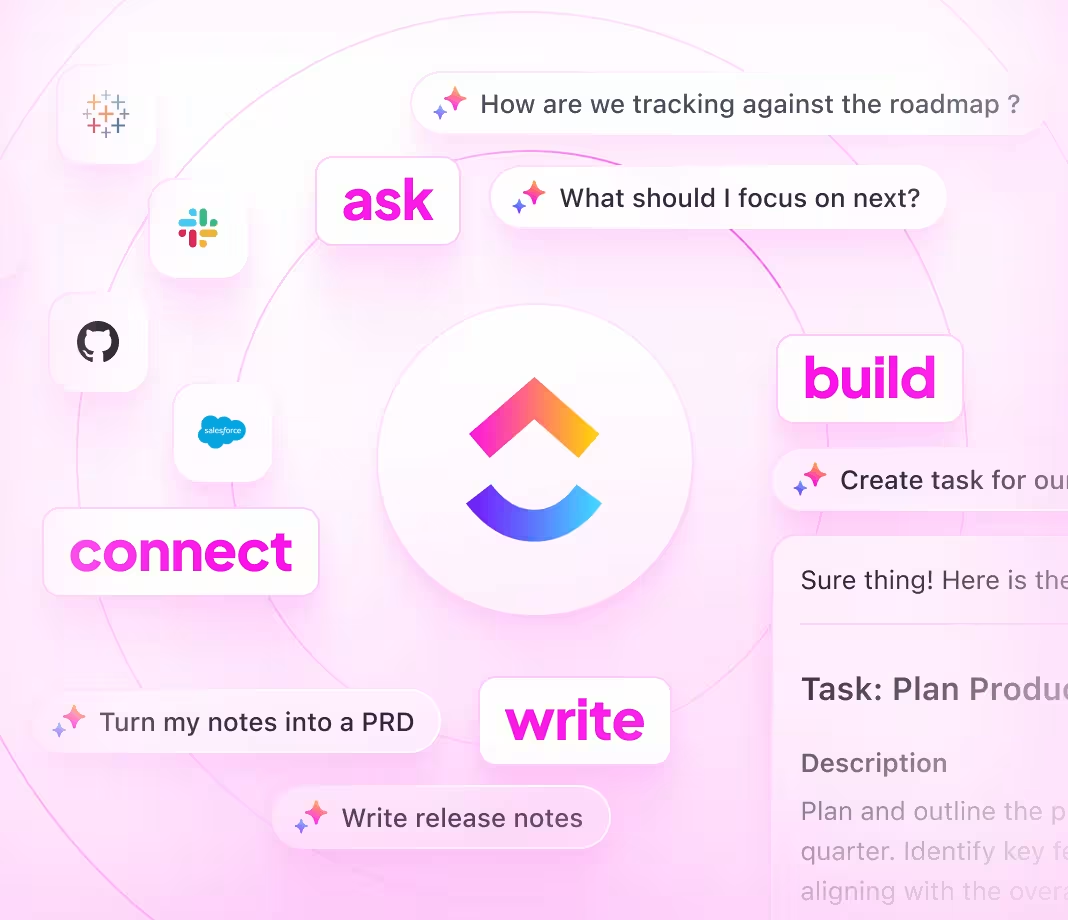
Trusted by the world’s leading businesses
AI in Historical Storytelling
AI Prompts Revolutionizing Historical Fiction Writing
Crafting immersive historical fiction goes beyond weaving tales—it's about meticulous research, authentic details, and structured storytelling.
From gathering era-specific facts to plotting timelines and character arcs, writing historical fiction demands juggling numerous sources, drafts, and deadlines. AI prompts are now a vital part of this creative process.
Writers and editors leverage AI to:
- Quickly uncover period-accurate references and cultural nuances
- Generate character backstories, scene outlines, and dialogue starters
- Condense dense historical texts into digestible summaries
- Transform scattered notes into organized chapter plans and task lists
Integrated into familiar tools—such as documents, brainstorming boards, and project trackers—AI in platforms like ClickUp Brain acts as a silent collaborator, turning creative sparks into structured, manageable writing projects.
ClickUp Brain Compared to Other Solutions
Why ClickUp Brain Excels for Historical Fiction Writing
ClickUp Brain integrates seamlessly with your workflow, understands your story context, and helps you focus on crafting narratives instead of managing tools.
Common AI Writing Tools
- Constantly toggling between apps to collect research
- Repeating story details with every new prompt
- Receiving generic, uninspired suggestions
- Hunting through multiple platforms for notes
- Interacting with AI that lacks story awareness
- Manually switching between different AI models
- Relying on browser add-ons with limited features
ClickUp Brain
- Deeply connected to your story drafts, character notes, and team feedback
- Remembers your plot arcs and writing objectives
- Provides tailored, insightful guidance
- Searches all your project materials instantly
- Supports voice commands for hands-free writing
- Automatically selects the optimal AI model for your needs
- Available as a fast, native app on Mac & Windows
Prompts for Historical Fiction Writing
15 Essential AI Prompts for Crafting Historical Fiction
Enhance your storytelling—research, character development, and plot crafting simplified.

Outline 5 distinct settings for a Victorian-era mystery novel, drawing from the ‘Victorian London Research’ document.
ClickUp Brain Behaviour: Analyzes the linked document to extract vivid location details and thematic elements for setting ideas.

Identify popular character archetypes in 18th-century French literature and their narrative roles.
ClickUp Brain Behavior: Gathers insights from literary analysis files; Brain Max can supplement with external literary databases if accessible.

Draft a character profile for a rebellious suffragette inspired by notes in ‘Character Concepts’ and historical letters.
ClickUp Brain Behavior: Pulls relevant descriptions and historical context from linked sources to create a detailed character sketch.

Summarize key political events between 1910 and 1920 from the ‘World War I Timeline’ document.
ClickUp Brain Behavior: Extracts chronological data and major occurrences to provide a concise historical overview.

List common fabrics and clothing styles worn by European nobility in the 1600s, referencing costume design archives.
ClickUp Brain Behavior: Reviews internal documents to compile materials and fashion trends relevant to the era.

From the ‘Battle Tactics Overview’ document, create a checklist of military strategies used in the Napoleonic Wars.
ClickUp Brain Behavior: Identifies key tactics and organizes them into a structured format suitable for story integration.

Summarize 3 prevalent themes in post-Civil War American literature based on recent research notes.
ClickUp Brain Behavior: Detects recurring motifs and author perspectives from linked study materials.

From the ‘Historical Diaries Q3’ folder, extract common daily life challenges faced by settlers in the 1800s.
ClickUp Brain Behavior: Analyzes personal accounts to highlight frequent hardships and societal conditions.

Compose engaging dialogue snippets reflecting 1920s slang using the style guide in ‘Era Language.pdf.’
ClickUp Brain Behavior: References tone and vocabulary from the guide to suggest authentic conversational lines.

Summarize changes in censorship laws affecting literature between 1930 and 1950 and their impact on storytelling.
ClickUp Brain Behavior: Reviews linked legal documents and historical analyses to outline key regulatory shifts.

Generate guidelines for accurate depiction of 19th-century medical practices, referencing period medical texts.
ClickUp Brain Behavior: Extracts procedural details and terminology to assist in realistic scene creation.

Create a checklist for incorporating authentic social customs from Edo-period Japan using cultural research files.
ClickUp Brain Behavior: Identifies traditional practices and etiquette to ensure cultural accuracy in narratives.

Compare portrayals of class dynamics in British and Russian literature from the 19th century using comparative study documents.
ClickUp Brain Behavior: Summarizes thematic contrasts and similarities into an accessible format for writers.

What architectural styles influenced urban settings in early 20th-century novels?
ClickUp Brain Behavior: Synthesizes information from architectural studies and literary critiques to highlight stylistic trends.

Summarize common plot devices used in historical romance novels set during the Renaissance period.
ClickUp Brain Behavior: Extracts narrative patterns and character arcs from genre-specific research and story outlines.
Craft Historical Fiction with ClickUp Brain
Cut down rewrites, unify your team, and create richer stories using AI-driven workflows.





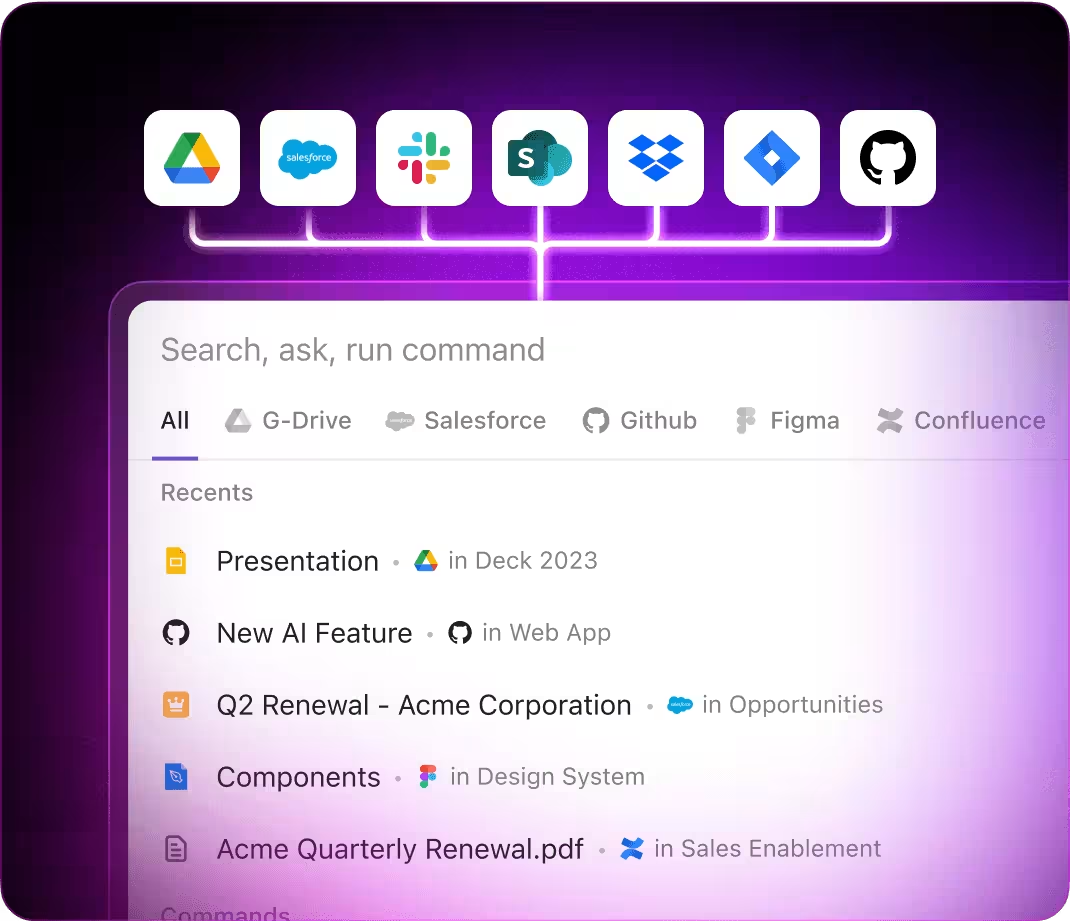
AI Prompts for Crafting Historical Fiction with ClickUp Brain
Discover How ChatGPT, Gemini, Perplexity, and ClickUp Brain Enhance Historical Storytelling
ChatGPT Story Prompts
- Outline a 5-point character arc for a protagonist living in Victorian London, focusing on societal challenges.
- Compose a compelling book blurb for a historical novel set during the Renaissance, highlighting intrigue and romance.
- Suggest 3 alternative plot twists involving political intrigue in 18th-century France, emphasizing historical accuracy.
- Draft a scene-by-scene plan for depicting daily life in a medieval village.
- Compare three different settings for a Civil War story and summarize key cultural details to include.
Gemini Story Ideas
- Generate 3 unique perspectives for narrating a story set in ancient Egypt based on cultural insights.
- List innovative ways to depict trade and commerce in a Silk Road tale focusing on character interactions.
- Create a mood board description for a 1920s Parisian artist’s studio, highlighting atmosphere and style.
- Propose seating arrangements and social dynamics for a Victorian-era dinner party scene.
- Develop a comparison chart of three historical periods suitable for a coming-of-age story, focusing on social norms and challenges.
Perplexity Research Prompts
- Identify 5 authentic materials used in medieval clothing and rank them by availability and cost.
- Provide a comparison of communication methods in the 19th century, emphasizing their impact on plot development.
- Summarize global trends in historical fiction readership and popular themes.
- List 5 innovative narrative techniques for depicting historical events and rank by reader engagement.
- Analyze past bestselling historical novels and summarize top storytelling lessons for new authors.
ClickUp Brain Workflow Prompts
- Transform this author feedback into clear writing and editing tasks with deadlines.
- Summarize brainstorming session notes and assign follow-up story development tasks to team members.
- Review annotated manuscript sections and generate a checklist of revisions needed for historical accuracy.
- Create a prioritized task list from the editorial meeting focusing on plot consistency and character development.
- Summarize beta reader comments and produce actionable editing and research tasks within ClickUp.
How ClickUp Supports You
Transform Early Thoughts Into Polished Narratives
- Convert scattered notes into detailed story outlines swiftly.
- Draw inspiration from previous drafts and historical research.
- Build customizable templates to accelerate each writing phase.
Brain Max Boost: Quickly explore earlier story versions, notes, and reference materials to fuel your next historical fiction plot.
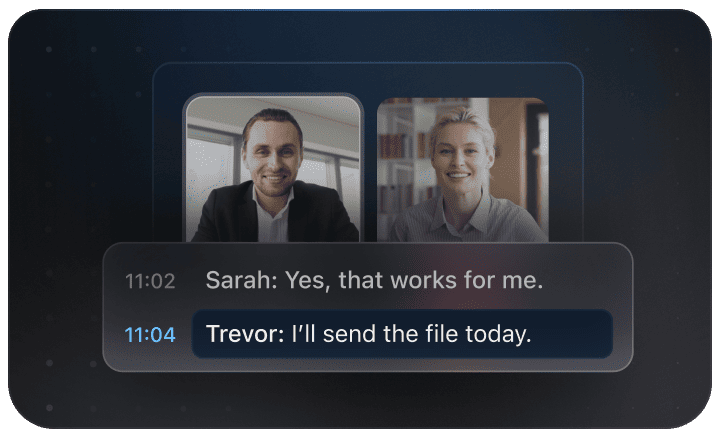
Why Choose ClickUp
Accelerate Historical Fiction Writing Workflows
- Transform detailed story ideas into organized writing tasks.
- Break down historical research into manageable assignments.
- Automatically compile chapter summaries and progress reports without extra effort.
Brain Max Boost: Instantly access previous drafts, character timelines, or historical references across your projects.
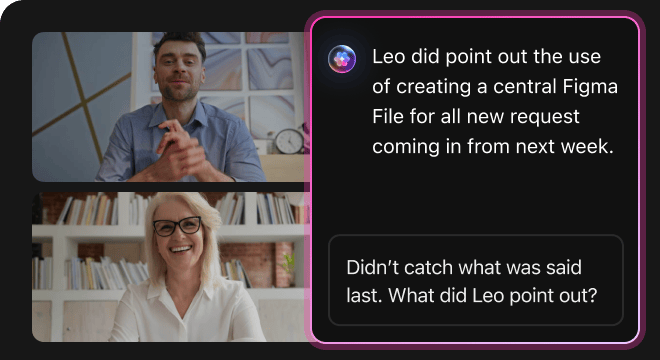
AI Advantages
How AI Prompts Elevate Every Phase of Historical Fiction Writing
AI prompts accelerate creativity and inspire richer, more authentic historical narratives.
Instantly Craft Compelling Story Ideas
Writers explore diverse plotlines quickly, spark fresh creativity, and overcome writer’s block.
Make Informed Narrative Choices
Shape stories with historical accuracy, deepen character development, and engage readers authentically.
Spot Plot Inconsistencies Early
Avoid narrative errors, enhance story coherence, and reduce costly rewrites later on.
Align Your Writing Team Effortlessly
Enhances collaboration, ensures consistent vision, and accelerates editorial decisions among authors and editors.
Expand Creative Horizons
Ignites innovative storytelling, explores untold perspectives, and keeps your work fresh and captivating.
Integrated AI Support Within ClickUp
Transforms AI-generated ideas into actionable writing tasks that keep your project moving forward.
Boost Your Historical Fiction Writing
Cut down on research time, enhance story accuracy, and craft richer narratives with ClickUp Brain's AI support.





